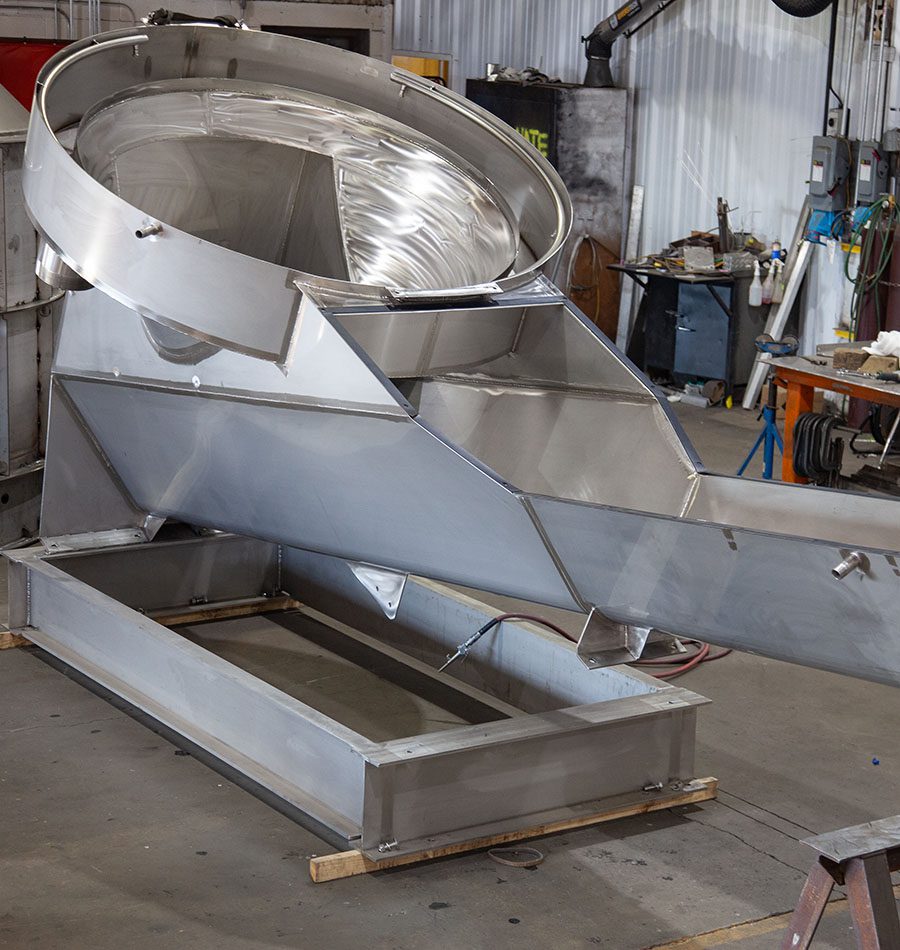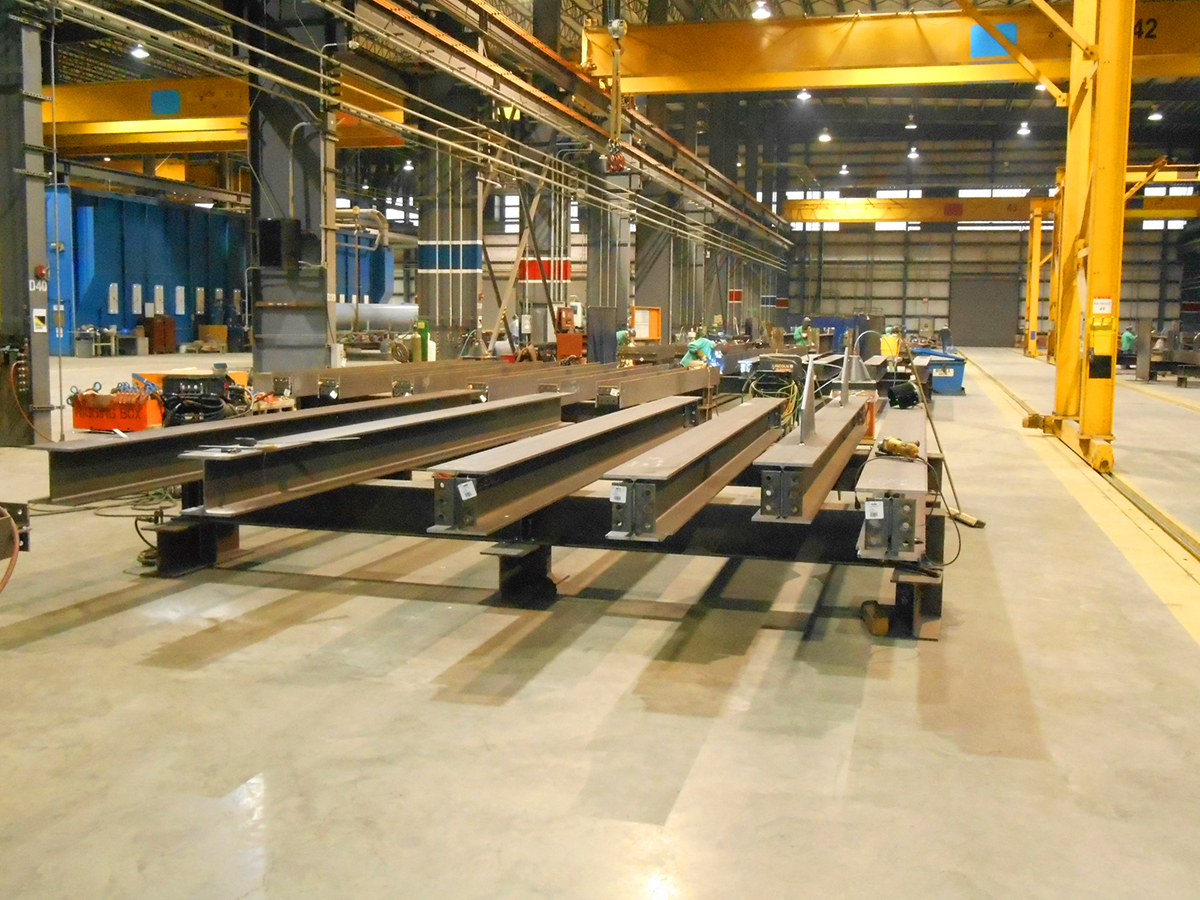Advanced Steel Fabrication Melbourne: Building the Future Today
Advanced Steel Fabrication Melbourne: Building the Future Today
Blog Article
Comprehensive Evaluation of Cutting-Edge Techniques in Steel Construction Industry
As the steel manufacture sector proceeds to progress, the integration of advanced techniques has actually become necessary for remaining competitive and fulfilling the needs of modern manufacturing standards. From laser reducing innovations to the utilization of robotics and 3D printing in steel production, the landscape of construction techniques is swiftly altering. With each development bringing its own set of advantages and obstacles, a comprehensive evaluation of these strategies is critical for companies aiming to improve their processes, boost accuracy, and eventually, elevate the quality of their steel fabrication output. In this dynamic sector where modern technology plays an essential function, understanding the nuances of these sophisticated strategies is not just an option but a requirement for those seeking to advance in the ever-evolving world of steel construction.
Laser Cutting Improvements
In the realm of steel fabrication, laser cutting improvements have actually transformed the accuracy and effectiveness of metal shaping procedures. By utilizing the power of concentrated laser beam of lights, suppliers can currently attain unrivaled levels of precision when reducing via various sorts of steels. This innovation enables elaborate layouts to be executed with very little material wastefulness, making it an economical solution for markets requiring high precision parts.
One of the essential advantages of laser cutting is its capability to take care of a large array of materials, including stainless-steel, aluminum, and carbon steel, easily. The procedure produces clean, burr-free sides, eliminating the need for extra finishing actions. Moreover, the non-contact nature of laser cutting lowers the danger of product contamination, causing greater quality output.
Moreover, laser reducing devices can be set to make swift, exact cuts, significantly reducing manufacturing time compared to conventional cutting techniques. This speed and precision make laser cutting specifically ideal for automation settings where effectiveness is vital. As modern technology remains to advancement, laser cutting is positioned to play an increasingly crucial duty in the steel fabrication market.

CNC Machining Innovations
The development of CNC machining technologies has actually introduced a brand-new age of accuracy and efficiency in the steel manufacture sector. Computer System Numerical Control (CNC) equipments have transformed steel construction by offering unrivaled accuracy and repeatability in the production procedure. metal fabrication melbourne. Among the essential technologies in CNC machining is the assimilation of sophisticated software program systems that allow real-time surveillance and adjustments, resulting in improved efficiency and quality assurance
Additionally, the advancement of multi-axis CNC makers has actually permitted for the manufacture of complicated steel parts with complex layouts that were previously challenging to generate. These devices can do a wide variety of machining procedures, consisting of milling, exploration, transforming, and grinding, all with high levels of precision.
Furthermore, the incorporation of automation and robotics in CNC machining has structured manufacturing procedures, reduced preparations, and reduced the margin of mistake. This combination of advanced modern technologies not just improves performance however also ensures regular quality across all produced steel components. In verdict, CNC machining advancements continue to drive improvements in the steel fabrication sector, setting new criteria for precision and productivity.
Automated Welding Technologies
Automated welding innovations have reinvented the steel fabrication industry, enhancing effectiveness and precision in the welding procedure. These advanced innovations make use of computer-controlled systems to automate the welding procedure, bring about greater performance degrees and improved weld quality. Among the essential benefits of automated welding is the capacity to execute complex welds with constant accuracy, minimizing the likelihood of errors and remodel.
Robot welding systems go to the center of automated welding technologies, supplying exceptional speed and precision. These systems can deal with a large range of welding tasks, from straightforward to detailed, easily (steel fixing). By utilizing advanced sensors and software, robot welders can adjust to variants in material and joint geometry, guaranteeing an attire and reputable weld
Additionally, automated welding innovations boost work environment safety and security by decreasing the direct exposure of human welders to harmful fumes and intense heat. As the steel manufacture market remains to advance, incorporating automated welding innovations will certainly be crucial for business aiming to stay affordable and meet the growing needs for high-quality bonded items.
Robotics Integration in Fabrication
Using robot systems in fabrication processes has become a crucial strategy for enhancing efficiency and precision in modern production environments. Robotics assimilation in steel fabrication supplies a myriad of benefits, consisting of raised productivity, boosted quality assurance, and improved precaution. These innovative robot systems are outfitted with innovative sensors and shows you could try these out capabilities, enabling them to perform complex jobs with a high level of accuracy and repeatability.
One of the crucial benefits of robotics integration in steel construction is the capacity to automate repetitive tasks, such as material handling, reducing, welding, and setting up processes. This not only accelerates production cycles however also decreases the threat of human error, bring about greater overall item high quality. Additionally, robots can run 24/7, dramatically enhancing production output and conference limited task due dates.

3D Printing in Steel Manufacturing
Having reinvented the steel construction industry through robotics combination, the growing exploration of 3D printing in steel manufacturing is poised to further breakthrough the world of modern production methods. 3D printing, additionally referred to as additive manufacturing, provides unmatched design freedom and intricacy, enabling the development of complex steel frameworks that were previously unattainable via typical production approaches. By utilizing computer-aided style (CAD) software program, manufacturers can specifically regulate the layer-by-layer deposition of steel product, resulting in get rid of improved functionalities and geometries.
Among the essential advantages of 3D printing in steel production is its ability to reduce material waste considerably. Unlike subtractive manufacturing processes where excess material is trimmed away, 3D printing only uses the necessary quantity of steel required for the final component. This effectiveness not only leads to cost financial savings but also straightens with sustainable production practices by lessening ecological influence.
Moreover, 3D printing enables quick prototyping and modification, enabling the production of small batches of intricate steel parts with brief lead times. As the innovation remains to mature and become much more available, its integration right into mainstream steel fabrication procedures is expected to drive development and efficiency across the market.
Final Thought
In verdict, the steel construction market has actually seen considerable innovations in methods such as laser cutting, CNC machining, automated welding, robotics combination, and 3D printing. These innovative technologies have changed the means steel items are produced, leading to raised effectiveness, precision, and cost-effectiveness. Proceeded financial investment in these cutting-edge techniques is essential for the sector to stay competitive and meet the demands of contemporary manufacturing procedures.
As the steel fabrication sector continues to evolve, the assimilation of sophisticated strategies has actually become essential for staying competitive and satisfying the demands of contemporary manufacturing criteria.One of the crucial benefits of laser cutting is its capacity to deal with a large array of products, consisting of stainless steel, aluminum, and carbon steel, with ease.Automated additional reading welding technologies have transformed the steel manufacture sector, improving effectiveness and accuracy in the welding procedure.Having actually transformed the steel construction sector with robotics assimilation, the expanding expedition of 3D printing in steel production is positioned to more development the world of contemporary production methods.In conclusion, the steel fabrication sector has actually seen substantial advancements in strategies such as laser cutting, CNC machining, see automated welding, robotics integration, and 3D printing.
Report this page